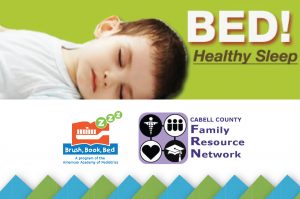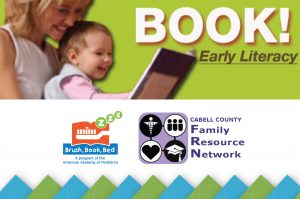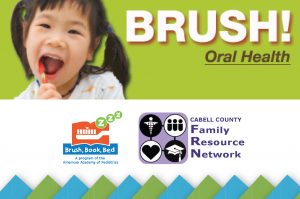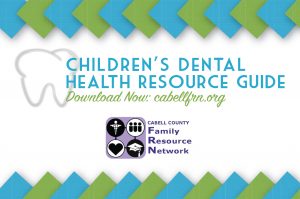February 28, 2019
This week, we will delve into the Bed portion of the Brush, Book, Bed campaign.
Sleep is a vital part of your child’s routine. Good sleeping habits start from birth, and parents can encourage positive sleep practices from the newborn stage onward. Routine is a powerful tactic when it comes to your child’s sleep. Waking up, napping and going to sleep for the night at the same times will help your child be his or her healthiest.
How can you ensure your child a good night’s rest? Try the 4 Bs: Bath, Brush, Book, Bed. It’s easy to remember and it gives you a structured routine.
- Give your child a bath. A bath is a good way to wind down from dinner and other activities. Plus, it gives you some quality time together — telling stories, playing with toys, singing songs and more. Change your child into her favorite pajamas and gather a beloved toy.
- Brush your child’s teeth. If he can brush their own teeth, make sure he brushes for at least two minutes. Use an age-appropriate amount of toothpaste. If necessary, sing a song or make up a story in order to encourage your child to brush!
- Read a book. Encourage her to choose her favorite book, and have a few minutes of parent-child storytime before it’s lights out. Put a time or number of books limit to ensure that your child gets good rest.
- No matter your child’s age, it could be a challenge to get him to sleep. Try to get him to sleep at the same time every night, even on weekends. It also helps to have your child fall asleep independently and in his own bed. You may hear crying and other protests, but your child will fall asleep.
Learn more about the 4 B’s: https://www.healthychildren.org/English/healthy-living/sleep/Pages/The-4-Bs-of-Bedtime.aspx
*********************************************
February 18, 2019
Here at the Cabell County Family Resource Network, we promote children’s dental health every day of the year. When we spread the word about dental homes, age-one dental visits and other key information, we communicate about the Brush, Book, Bed campaign from the American Academy of Pediatrics.
This week, we will delve into the Book portion of the Brush, Book, Bed campaign.
From birth, it’s vital to read to your child, according to the AAP’s Books Build Connections Toolkit. It helps establish your bond with your child and build your baby’s brain. Start setting aside some time for reading every day, no matter when that occurs during the day. Limit your distractions, like your cell phone and the TV, in order to spend quality one-on-one time with your baby. Establishing this routine early in your child’s life will create the foundation for future book reading and for your child to learn how to read.
Once your baby develops into an on-the-go one year old and toddler, reading still remains one of the most important core activities of the day. Your child will begin to explore more and will interact with more books by pointing, laughing and imitating words and sounds. Reading to your child on a regular basis also prepares them for school by honing their listening skills.
As your child gets older, he or she will express more strong wishes and preferences. Keep in mind that you can do other things to keep your child engaged if he or she does not want to read a story at a particular time. You can play with toys, go outside, sing and dance, teach ABCs and more.
When your child is 3 or 4, this begins the “why” stage. Reading is a great way to have a conversation with your child and answer questions. Children at this age heavily use their imaginations and are building the skill set to read for themselves.
You can help your child to learn to read over time by doing the following:
- Run your fingers across words, numbers, illustrations and photographs.
- Change up your voice! Use animal sounds and voices that will make them laugh.
- Discuss the pictures in the book with your child.
- Ask your children to help you repeat key words and phrases in the book.
- Show a correlation between the story and real life issues and trends.
- Stop and answer any questions your child may have during the story.
- Keep reading to your child, even after he or she learns to read.
Here are some great books to add to your child’s library: https://www.pinterest.com/cabellcountyfrn/childrens-books/
*********************************************
February 15, 2019
Here at the Cabell County Family Resource Network, we promote children’s dental health every day of the year. When we spread the word about dental homes, age-one dental visits and other key information, we communicate about the Brush, Book, Bed campaign from the American Academy of Pediatrics.
It’s easy and for parents and caregivers to remember and replicate in your own homes. The Brush, Book, Bed (BBB) campaign includes the following three components:
Each night:
- Help your children to brush their teeth
- Read a favorite book (or two!)
- Get to bed at a regular time each night.
This week’s blog post will focus on the Brush portion of the BBB campaign. How can you ensure that your child is brushing properly to keep those pearly whites healthy?
As soon your baby is born, start establishing regular dental health routines. If course, they won’t have teeth yet, but you can use a soft washcloth to wipe your baby’s gums after feedings. As your baby’s teeth come in (and up until age 3), start to brush them and introduce healthy foods to decrease the possibilities of early tooth decay. Use only a smear (about the size of a grain of rice) of fluoride toothpaste twice a day.
For children ages 3-6, increase the toothpaste to a the size of pea. Make sure your child brushes at least 2 minutes twice a day. It’s OK for your child to brush his or her own teeth, but make sure they are getting those hard-to-reach spots. If your child just isn’t having it, try playing a fun game, singing a song or telling a story to help your child brush his or her teeth. Kids love repetition and fun, so use that to your advantage!
The age 1 dental visit is vital to establishing a dental home for your child and ensuring his or her health for a lifetime.
To implement Brush, Book, Bed into your regular routine, use these resources: https://www.healthychildren.org/English/healthy-living/oral-health/Pages/Brush-Book-Bed.aspx
*********************************************
February 8, 2019
Happy Children’s Dental Health Month! In 2017, we released our Kids’ Dental Health Resource Guide, a comprehensive guide that instills that each sector contributes to the overall health and well-being of our children’s oral health. Now in its third year, we continue to tweak the resource guide to make it even better and easier for everyone to find the resource they need — right when they need it.
The resource guide encompasses the following local, state, regional and national resources:
- National children’s dental health campaign
- Tips for healthy teeth for parents and caregivers
- Finding a dentist close to you
- Lessons to use with students in the classroom and beyond
- Fun activities for children
- Local, state, regional and national resources
The print and digital resource guide, available on www.cabellfrn.org, provides the following:
CHILDREN: Activities, videos, phone apps
PARENTS AND CAREGIVERS: Tips for healthy teeth
EARLY EDUCATION PROGRAMS: Pre-K and in-home family education
SCHOOLS AND TEACHERS: Lessons and activities, K-12
COMMUNITY ORGANIZATIONS AND FRNS: Available state resources
DENTAL AND HEALTH NATIONAL RESOURCES: WVDA, ADA, AAPA, AAP
COUNTY AND COMMUNITY HEALTH: Resources, oral health education
DENTISTS: Find a dentist, dental home, insurance, CHIP
Electronic Press Kit link:
http://bit.ly/kidsdentalhealth_EPK2019
At Cabell County FRN, we love our teeth, and this Kids’ Dental Health Month in February 2019, we’re showing others how to love their teeth, too!
Our partners at the Community and School Oral Health Team at Marshall University School of Medicine have some quick tips to ensure your child continues to have a bright, healthy smile:
- Brush two minutes two times per day with fluoridated toothpaste. It’s recommended that you help your child brush until they’re around 8 — and that’s due to the development of his or her fine motor skills. At around 8 and older, you children can brush on their own — about the same time they can tie their own shoelaces and brush their own hair.
- Once your child’s teeth start to come into the mouth, brush using a children’s toothbrush and fluoride toothpaste.
- Drink tap water with fluoride and eat healthy foods. Try to avoid sugar in your child’s diet as much as you can because sugar is a leading cause of early tooth decay.
- Consider using dental sealants to prevent tooth decay. Dental sealants cover the chewing portion of the tooth and are placed as soon as the permanent six year and 12 year molars come into the mouth.
- It’s also best to start your child’s visits with a dentist at age one.
Video Link: https://youtu.be/bgAOzIMp7M0




